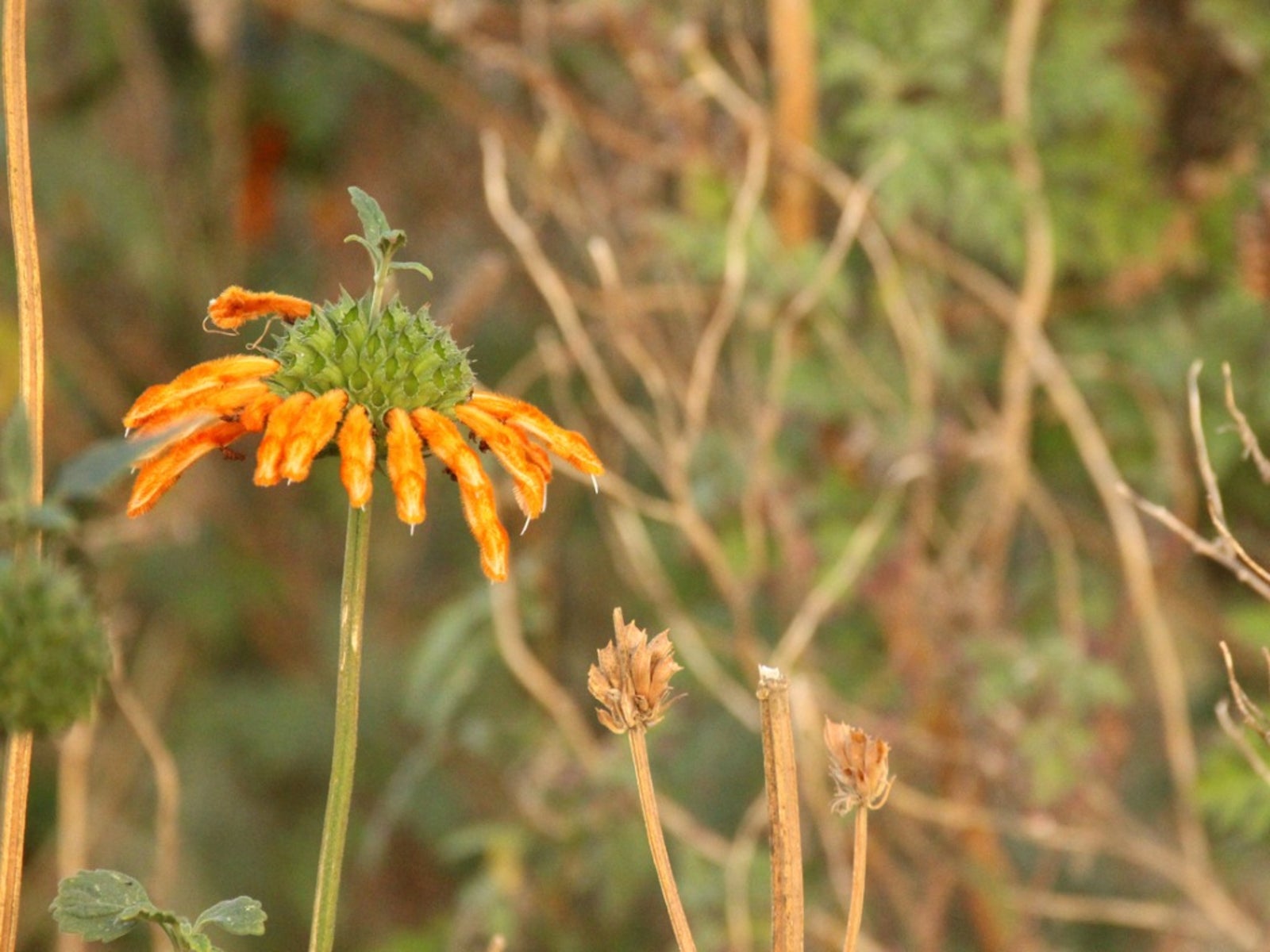Leonotis Plant Information: Lion’s Ear Plant Care And Maintenance


A gorgeous tropical shrub native to South Africa, lion’s ear (Leonotis) was transported first to Europe as early as the 1600s, and then found its way to North America with early settlers. Although some types can be invasive in tropical climates, Leonotis leonorus, also known as minaret flower and lion’s claw, is a popular ornamental in the home garden. Read on to learn about growing Leonotis plants and the many uses for Leonotis lion’s ear plant in the garden.
Leonotis Plant Information
Leonotis is a fast-growing plant that can quickly reach heights of 3 to 6 feet (0.9 m. to 1.8 m.). The plant consists of sturdy, upright stems that bear rounded clusters of fuzzy, reddish-orange, tube-shaped blooms measuring 4 inches (10 cm.) across. The colorful blooms are highly attractive to bees, butterflies and hummingbirds. In its native habitat, Leonotis grows wild along roadsides, in scrublands and other grassy areas.
Growing Leonotis Plants
Growing Leonotis plants perform best in full sunlight and nearly any well-drained soil. Lion’s ear plant is suitable for growing as a perennial in USDA plant hardiness zones 9 through 11. If you live north of zone 9, you can grow this plant as an annual by sowing seeds in the garden shortly before the last expected frost in spring for autumn blooms. Alternatively, plant seeds in containers indoors a few weeks earlier, then move the plant outdoors after all frost danger has passed. If a container-grown plant fails to bloom the first autumn, bring it indoors for the winter, keep it in a cool, bright place and move it back outdoors in spring. Lion’s ear plant propagation can also be achieved by taking cuttings from established plants in late spring or summer.
Lion’s Ear Plant Care
Lion’s ear plant care is minimal. Keep newly planted Leonotis moist, but not soggy, until the plant is established. At that point, the plant is fairly drought tolerant but benefits from occasional watering during hot, dry weather. Be careful not to overwater. Prune the plant after flowering and as needed to encourage more blooms and to keep the plant neat and tidy. Uses for Leonotis lion’s ear plant abound:
- Leonitis is a striking plant that works well in a border or privacy screen with other shrubby plants.
- Lion’s ear plant is ideal for a butterfly garden, especially when combined with other butterfly magnets such as bottlebrush or salvia.
- Leonitis is relatively salt-tolerant and is a beautiful addition to a coastal garden.
- The showy blooms work well in floral arrangements too.
Gardening tips, videos, info and more delivered right to your inbox!
Sign up for the Gardening Know How newsletter today and receive a free copy of our e-book "How to Grow Delicious Tomatoes".

A Credentialed Garden Writer, Mary H. Dyer was with Gardening Know How in the very beginning, publishing articles as early as 2007.
-
 Looking For Plants To Give You The Soft And Fuzzies? Try These 5 Fuzzy Leaf Plant Options
Looking For Plants To Give You The Soft And Fuzzies? Try These 5 Fuzzy Leaf Plant OptionsLovers of texture, drama, silver foliage and tactile plants will adore these special sensory garden additions. These fuzzy leaf plant options will leave you all aglow
By Susan Albert
-
 Get Ready For A Summer Of Hummers! Grow These Full Sun Hummingbird Plants and Flowers
Get Ready For A Summer Of Hummers! Grow These Full Sun Hummingbird Plants and FlowersIf you’re lucky enough to enjoy a sunny backyard, make sure you are maxing out on your pollinator opportunities and grow these full sun hummingbird plants and flowers
By Tonya Barnett